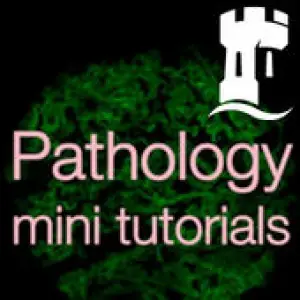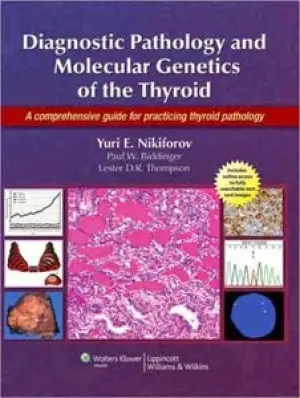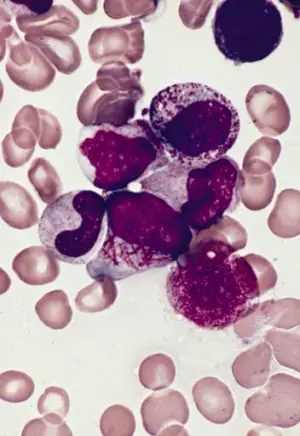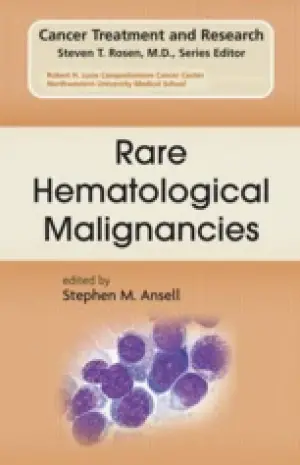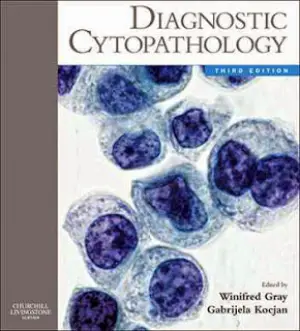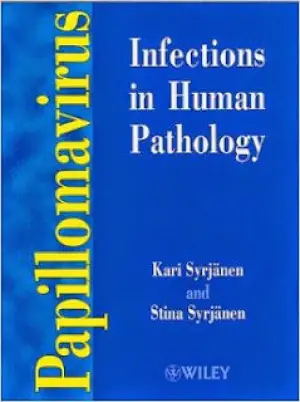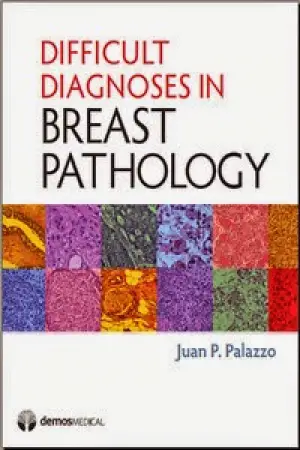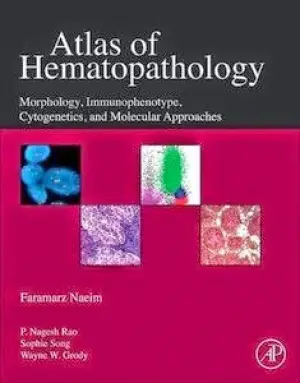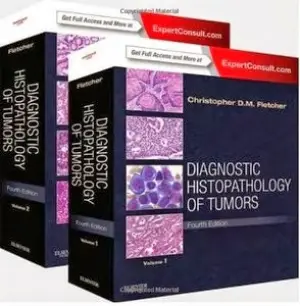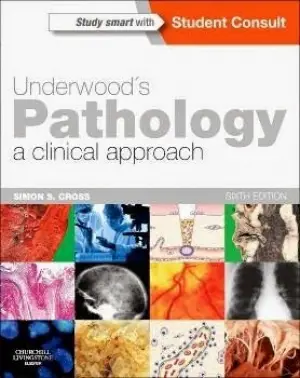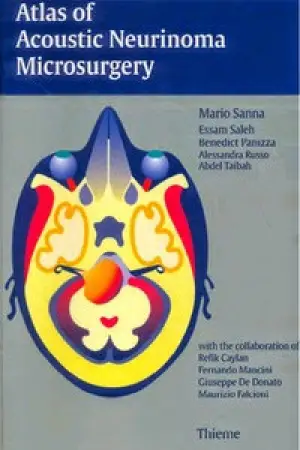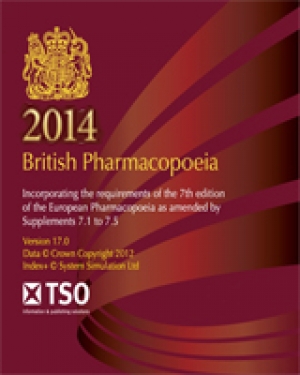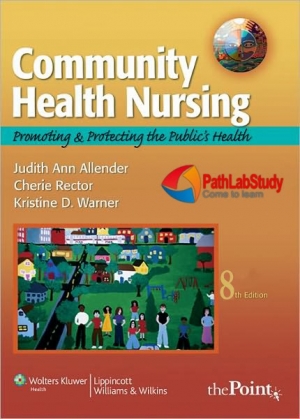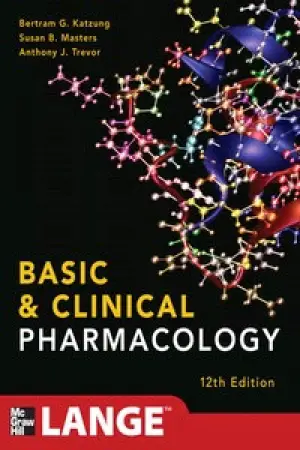Displaying items by tag: Books
Pathology Mini Tutorials University Of Nottingham
Description: Short tutorials illustrated with gross and microscopic photographs of pathological conditions. These video podcasts are designed to supplement pathology tutorials for Nottingham medical students.
Diagnostic Pathology and Molecular Genetics of the Thyroid
Description: The first comprehensive surgical pathology textbook and reference on the thyroid in over fifteen years, this book presents the most advanced concepts on the diagnostic surgical pathology, cytopathology, immunohistochemistry, and molecular genetics of neoplastic and non-neoplastic thyroid diseases. The authors provide a detailed description of the surgical pathology of thyroid diseases side-by-side with major advances in immunohistochemistry and molecular genetics that can be used in evaluating thyroid tumors and non-neoplastic diseases. By combining diagnostic surgical pathology, cytopathology, immunohistochemistry, and molecular genetics, the book effectively mimics the practice of contemporary surgical pathologists. All major chapters have a uniform style of description and include a separate section on molecular genetics.
Lichtman's Atlas of Hematology
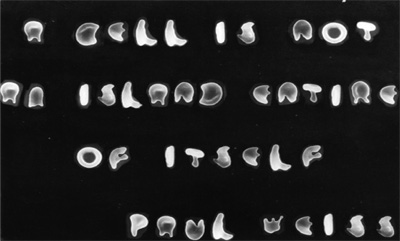
This quotation, from the noted biologist Paul Alfred Weiss, was formed by scanning electron micrographic images of misshapen red cells from a patient with thalassemia minor and a patient with sickle cell anemia.
Rare Hematological Malignancies
Description: This hugely practical work will be a bible in the pocket of hematologists and other practitioners everywhere, covering as it does malignant hematologic diseases that physicians will only occasionally see. It provides accurate, up-to-date information on the disease biology as well as practical recommendations concerning disease management. Information concerning these diseases, and particularly regarding their management, can be extremely difficult to find. Not any more.
Diagnostic Cytopathology by Gray
Description: * 2011 BMA Book Awards - Highly Commended in Pathology * The new edition of Diagnostic Cytopathology provides the practicing and trainee cytopathologist with a comprehensive guide to the diagnostic applications of exfoliative and aspiration cytology. The book covers normal and abnormal cytological findings encountered in all body sites where cytological applications are used. Appropriate histopathological, immunohistochemical and molecular correlations, together with a consideration of the possible differential diagnoses, accompany the cytological findings. The reader can see a full range of normal and abnormal findings with almost 2,000 full-colour images. The book is heavily referenced to ensure that it will serve as a practical resource for daily reference in the laboratory. A uniformity of basic chapter structure will help readers to quickly find the diagnostic answers they seek. A practical in-depth bench book that covers everyday diagnostic work in the laboratory. It provides an accessible guide to cytological diagnostic investigation and screening. Each chapter provides a summary of major diagnostic criteria in order to quickly direct the user to the most relevant material. Cytological findings closely related to histopathological, immunohistochemical and molecular appearance whenever appropriate to assist in the interpretation and recognition of tissue samples. Almost 2,000 colour illustrations incorporated throughout to provide a comprehensive visual guide. Stay on top of the latest concepts and developments in molecular markers. Access full text online and download images via Expert Consult. This edition stresses not just the diagnostic cytological features of the various conditions encountered, but also the diagnostic pitfalls and the grey areas between so as to enable the reader to give more evidence-based reports. In recognition of their rapid expansion, there are new chapters on recent technological developments and on the cytodiagnosis of childhood tumours. A special section on the importance of multidisciplinary team meetings that include the cytopathologist as a core member of the team has also been included at the end of each chapter. As active members of this team, cytopathologists can define their role in the management pathway and thus bring the patient and the microscope together as never before. The full text can be accessed online and images downloaded via Expert Consult.
Papillomavirus Infections in Human Pathology
Description: This is the most up-to-date and comprehensive reference source on papillomavirus-associated human pathology, which examines the molecular biology of the infections and discusses diagnosis and treatment methods. Abundantly illustrated, it covers all aspects of human papillomaviruses from molecular biology and pathogenesis of HPV-associated diseases, as well as natural history and epidemiology, to a detailed study of the role of these viruses as potential etiological agents of a wide spectrum of both benign and malignant human tumours. While the main focus is on HPV infections of the genital tract, lesions of the skin, respiratory tract, the digestive system, the urinary tract and the eye are also covered in detail. Written by two authors who are internationally renowned for their work, it will be invaluable for both clinicians and researchers working in the fields of gynecology, pathology, sexually transmitted diseases, genito-urinary medicine, oncology, dermatology, otorhinolaryngology, and cancer epidemiology.
English for Science by Fran Zimmerman
Description: A text-workbook for use in secondary school and higher levels preparing ESL students for basic science courses taught in English.
Difficult Diagnoses in Breast Pathology
Description: Description: Breast cancer is the second leading cause of cancer death in women in the United States. For the pathologist, almost any breast lesion may produce diagnostic difficulty, especially due to frequently small samples (core biopsy specimens) and a variety of mimics and variants seen in specific types of lesions. Additionally, the difficulty of breast lesion diagnosis has risen dramatically in recent years due to the increased emphasis on stratifying patients for appropriate therapy on an individual basis; the wider range of both local and systemic therapeutic options, and the potential for earlier diagnosis through increased mammographic breast screening leading to a higher likelihood of a favorable outcome. Difficult Diagnoses in Breast Pathology provides a highly visual presentation of the major problems and questions that a pathologist is likely to encounter in the evaluation of common and uncommon breast diseases. Coverage includes needle core biopsy interpretation, diagnosis of precursor lesions, early stage disease, and recognition of neoplastic mimics and other misleading variants. In addition, this book emphasizes particularly difficult areas including the use of newer immunohistochemical markers. Throughout, the emphasis is on an easily accessible presentation with tables and lists of key points summarizing major findings and numerous high-quality images supporting the text. Difficult Diagnoses in Breast Pathology will be a valuable reference for every pathologist who deals with the diagnosis of breast diseases.
Atlas of Hematopathology: Morphology, Immunophenotype, Cytogenetics, and Molecular Approaches
Description: As the definitive diagnostic atlas of the diseases of the hematopoietic system, the Atlas of Hematopathology appeals to a wide range of people who are being trained in a variety of medical fields or practicing as non-hematopathologists, and therefore, are looking for a book which can provide information in a clear, focused format, with no excessive text or details. The atlas offers effective guidance in evaluating specimens from the lymph nodes, bone marrow, spleen, and peripheral blood, enabling clinicians to deliver more accurate and actionable pathology reports. Practicing physicians and those in pathology and hematology training also gain a better understanding of the nature of hematologic disorders and improve their diagnostic skills along the way. Taking a unique multi-disciplinary approach, the book covers conventional histopathology and cytopathology, as well as all important complementary diagnostic tests, such as immunophenotyping (immunohistochemical stains and flow cytometry), karyotyping, FISH and DNA/molecular studies. It offers concise textual and extensive visual coverage of both neoplastic and non-neoplastic hematology disorders, with the neoplastic hematology sections presented according to the most recent WHO classifications. There is also an introduction to the normal structures of hematopoietic tissues and the various multidisciplinary techniques. The atlas contains more than 900 high-quality color images that mirror the findings that fellows and clinicians encounter in practice. It provides information in a quick, simple and user-friendly manner, attracting those who are in training or are not considered experts in the field. Residents, fellows, practicing clinicians, and researchers in pathology, hematology, hematology/oncology, as well as graduate students in pathology and other clinicians workings in clinical hematology laboratories will all find it useful. Saves clinicians and researchers time in quickly accessing the very latest details on the diverse clinical and scientific aspects of hematopathology, as opposed to searching through thousands of journal articles For clinicians, fellows, and residents, correct diagnosis (and therefore correct treatment) of diseases depends on a strong understanding of the molecular basis for the disease - hematologists, pathologists, oncologists, and other clinicians will benefit from this clear, focused, annotated format Companion web site features over 900 images from the book!
Diagnostic Histopathology of Tumors by Fletcher
Description: Diagnose tumors with confidence with Diagnostic Histopathology of Tumors, 4th Edition. Dr. Christopher Fletcher's renowned reference provides the advanced, expert guidance you need to evaluate and interpret even the most challenging histopathology specimens more quickly and accurately. Diagnose efficiently and effectively using diagnostic flow charts, correlations of gross appearances to microscopic findings, and differential diagnosis tables for better recognition and evaluation of similar-looking entities. Employ immunohistochemistry, molecular and genetic diagnostic tests, and other modern techniques as well as the best morphologic diagnostic methods to effectively identify each tumor or tumor-like entity. Utilize new, clinically important molecular genetic data and updated classification schemes to help guide treatment and targeted therapy. Apply the latest techniques and diagnostic criteria with completely rewritten chapters on Small and Large Intestines, Heart, Larynx and Trachea, Ear, and Peritoneum. Find critical information quickly thanks to more tables and bulleted lists throughout. Access the entire text and illustrations online, fully searchable, at www.expertconsult.com.
Underwood's Pathology: A Clinical Approach
Description: Underwood's Pathology (formerly General and Systematic Pathology) is an internationally popular and highly acclaimed textbook, written and designed principally for students of medicine and the related health sciences. Pathology is presented in the context of modern cellular and molecular biology and contemporary clinical practice. After a clear introduction to basic principles, it provides comprehensive coverage of disease mechanisms and the pathology of specific disorders ordered by body system. An unrivalled collection of clinical photographs, histopathology images and graphics complement the clear, concise text. For this sixth edition, the entire book has been revised and updated. Well liked features to assist problem-based learning - including body diagrams annotated with signs, symptoms and diseases and a separate index of common clinical problems - have been retained and refereshed. Additional value is provided by the complementary online version - hosted on studentconsult.com - which includes the complete, fully searchable text, downloadable images, clinical case studies and a revised, interactive self-assessment section to check your understanding and aid exam preparation. This all combines to make Underwood's an unsurpassed learning package in this fascinating and most central medical specialty.
Atlas of Acoustic Neurinoma Microsurgery
Description: This colour atlas provides information on all major acoustic neurinoma procedures, and is designed to improve physicians’ skills in this specialty. With more than 50,000 new cases per year worldwide, acoustic neurinomas are among the most commonly observed skull-base tumours. They are also among the most demanding for surgeons, since great precision is needed to safeguard the auditory nerve, the facial nerve and other critical structures. The book begins with sections on the radiographic assessment of tumours, the selection of surgical approach, and pre-operative preparations. It then turns to the main surgical approaches, using hundreds of photographs-taken during actual surgery-to lead readers through each procedure in step-by-step detail. There is a special section on the use of endoscopy in acoustic neurinoma surgery, and an analysis of 50 MR scans. This practical volume should be of interest to otolaryngologists, neurosurgeons and other physicians involved in acoustic neurinoma surgery.
British Pharmacopoeia 2014
Description: The British Pharmacopoeia (BP) 2014 is the authoritative, current collection of standards for UK medicinal substances and the official source of all UK pharmaceutical quality standards. It is an essential reference for anyone involved in pharmaceutical research, development, manufacture and testing, and plays a vital role in ensuring that all medicinal substances on the UK market meet standards of safety, quality and efficacy. The BP comprises monographs, which set out the mandatory standards for active substances, excipients and formulated preparations, together with supporting General Notices, Appendices (test methods, reagents, etc) and Reference Spectra. Detailed information and guidance on various aspects of current pharmacopoeial policy and practice are provided in the Supplementary Chapters of the BP. The BP is supplied in a variety of formats designed for ease of use and a wide range of applications. The hard copy edition package comprises a boxed six volume set containing BP in five volumes and the BP (Veterinary) volume, plus CD-ROM. Purchase of the edition includes access to BP Online via www.pharmacopoeia.co.uk, the dedicated BP website.
Community & Public Health Nursing: Promoting the Public's Health
Description: Community & Public Health Nursing is designed to provide students a basic grounding in public health nursing principles while emphasizing aggregate-level nursing. While weaving in meaningful examples from practice throughout the text, the authors coach students on how to navigate between conceptualizing about a population-focus while also continuing to advocate and care for individuals, families, and aggregates. This student-friendly, highly illustrated text engages students, and by doing so, eases students into readily applying public health principles along with evidence-based practice, nursing science, and skills that promote health, prevent disease, as well as protect at-risk populations! What the 8th edition of this text does best is assist students in broadening the base of their knowledge and skills that they can employ in both the community and acute care settings, while the newly enhanced ancillary resources offers interactive tools that allow students of all learning styles to master public health nursing.
The Complete Idiot’s Guide to Healthy Stretching
Description: You’re no idiot, of course. You understand the benefits of good nutrition and regular exercise, and you consult your local sports pro to improve your golf swing or your second serve. But when it comes to stretching, you just don’t have the time! Don’t get bent out of shape yet! The Complete Idiot’s Guide to Heatlthy Stretching shows you how to find time for stretching s time for tretching in your daily routine–in the car, at your workplace, in the garden, or at your favorite recreation area.
Basic and Clinical Pharmacology, 12th Edition
Description: The most up-to-date, comprehensive, and authoritative pharmacology text in health medicine Enhanced by more than three hundred illustrations -- many in full color Organized to reflect the syllabi in many pharmacology courses and in integrated curricula, Basic & Clinical Pharmacology, 12e covers the important concepts students need to know about the science of pharmacology and its application to clinical practice. Selection of the subject matter and order of its presentation are based on the authors’ many years experience in teaching this material to thousands of medical, pharmacy, dental, podiatry, nursing, and other health science students. To be as clinically relevant as possible, the book includes sections that specifically address the clinical choice and use of drugs in patients and the monitoring of their effects, and case studies that introduce clinical problems in many chapters. Presented in full color and enhanced by more than three hundred illustrations, Basic & Clinical Pharmacology features numerous summary tables and diagrams that encapsulate important information. Coverage that spans every aspect of medical pharmacology: Basic principles Autonomic drugs Cardiovascular-renal drugs Drugs with important actions on smooth muscles Central nervous system drugs Drugs used to treat anemias, clotting disorders, hyperlipidemia, and inflammation and gout Endocrine drugs Chemotherapeutic and immunologic drugs Toxicology Special subjects (perinatal, geriatric, and dermatologic pharmacology) Botanical and "food supplements," and over-the-counter medications Prescribing Also in this edition: Drug Summary Tables conclude most chapters, providing a concise summary of the most important drugs General concepts relating to newly discovered receptors, receptor mechanisms, and drug transporters Descriptions of important new drugs, including monoclonal antibodies
